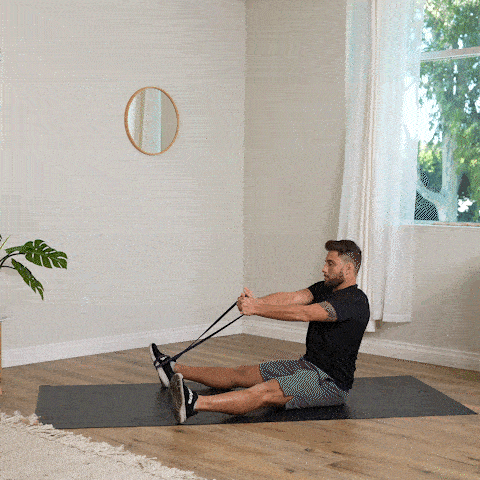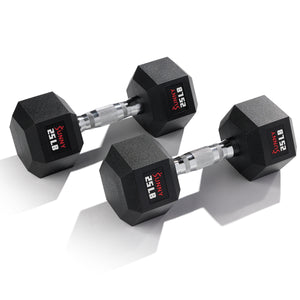What Is Your Core?
What is considered your core? Many of us hear the term and automatically associate the word core with abdominals, but it’s much more than that. Bob Gajda & Robert Dominquez are two pioneers in the field of performance enhancement. Their book Total Body Training defined the word “core” as the foundation of total-body training, which compromises the muscles in the center of the body. 29 muscles originate or insert into the pelvis; 20 link the pelvis to the femur, and the remainder connects the pelvis to the spine (1).
These muscles stabilize the body in an upright, antigravity position or using the arms and legs to throw or kick. These muscles maintain the body’s structure during vigorous exercise, jumping, shoveling snow, and lifting weights overhead. These muscles also control the head, neck, ribs, spine, and pelvis. The powers of the core play a significant role in the production and reduction of force, functioning as a substantial force transducer (1).
Why Is It Important to Have a Strong Core?
Core training is essential for several different reasons. It helps improve dynamic postural control and develops appropriate muscular proportionality around the lumbo-pelvic-hip complex. A strong, stable core allows for emotional and functional strength expression and improves neuromuscular efficiency. Greater neuromuscular control and stability offer a biomechanically efficient position for optimal muscle function, leading to improved performance. A strong core enables the body to assume various positions with instantaneous changes (1).

How Should I Train My Core?
Because of the structure and function of the core, high volumes are necessary for achieving significant training adaptation. Rotational movement exercises are usually done in sets of 20 repetitions. For total body throws, the rep range is usually 6 to 10. For wall throws or partner throws, the repetitions are 20. Select a maximum of 10 exercises in a session and base the number of reps on the training objective for each session (1).
Allocate 15 to 20 minutes daily for core work. Rotations, chopping, flexion, and extension movements are especially effective as warm-ups. The throws should be done as a segment of the actual workout or an actual workout to ensure high intensity and proper mechanics. The least desirable time to train the core is after the workout or during a cooldown (1).
How Should I Select Core Exercises?
When selecting an exercise, there any many things to consider. First and foremost is your safety. To avoid the risk of injury, only use activities that you can control while doing them. Stress multiple planes wherever possible and practical (stabilization, flexion & extension, rotation, & throwing and catching). All movements should be derived from fundamental movement skills. Start with simple exercises and gradually increase the complexity, but only once you’ve mastered the simple activities.
Progress from lower-force to higher-force movements; and from static to dynamic movements. Maintain correct execution when increasing reps, sets, and intensity. Increase proprioceptive demand through various forms of external loading only after previous steps in the progression have been mastered. Always emphasize quality before quantity; never sacrifice the quality of the movement.
My 8 Favorite Core Exercises to do Before Bed
1. Side Plank

- Lie on your right side, legs extended and stacked from hip to feet.
- The elbow of your right arm is directly under your shoulder and wrist in line with the elbow.
- Ensure your head is directly in line with your spine and shoulders in line with your hips.
- Your left arm can be aligned along the left side of your body, or you can have it straightened over it.
- Engage your abdominal muscles, drawing your navel toward your spine.
- Lift your hips and knees from the mat while exhaling. Your torso is straight in line with no sagging or bending. Hold the position.
- Switch to other side.
* Modifications
- Stagger legs, with your bottom leg behind your top leg.
- Bend the bottom leg and rest on the floor, keeping your top portion straight.
2. Bird-Dog

- Start on all fours, on an exercise mat or other cushioned surface with your knees hip-width apart and hands firmly on the ground, about shoulder-width apart.
- As you engage your core, point one arm out straight in front and extend the opposite leg behind you, forming a straight line from your extended hand to your extended foot. Keep your hips squared to the ground. If your low back begins to sag, raise your leg only as high as you can while keeping the back straight with your hand in line with your shoulder and foot in line with your hip.
- As you’re holding, keep your core engaged throughout the entire exercise and work to minimize any extra motion in your hips during the weight shift.
- Switch to opposite arm and leg.
* Modifications
- Start by just reaching your arm out in front. Once you’re comfortable with that, then try lifting your leg. Once comfortable with those, you may graduate to both arm and leg.
3. Superman Alternating Arm & Leg

- Lie face down on a mat with your arms stretched above your head (like Superman).
- Raise your right arm and left leg about 5 to 6 inches off the ground (or as far as you comfortably can).
- Hold for 3 seconds and relax.
- Repeat with the opposite arm and leg.
4. Seated Resistance Band Trunk Rotations

- Sit down and form a figure 8 with the resistance band.
- Grab each end of the resistance band and fold it in half.
- Place the right-side loop around your foot and pull the left side of the band to make it tighter around your foot.
- Widen out your legs to a “V”.
- Use the end of the band as a handle and straighten out your arms, starting with your hands in line with your sternum.
- Rotate & twist your trunk away from your foot, anchoring the resistance band.
- Slowly rotate your trunk and hands back to starting position.
5. Kettlebell or Dumbbell Oblique Side Bend

- Holding a kettlebell in your left hand, plant both feet on the floor shoulder-width apart. Place your right hand behind your ear. This is your starting position.
- Stretching your right obliques, lower the kettlebell down your left leg and draw your ribs towards your left hip.
- Contract your right obliques to straighten your torso to return to the starting position. Complete half of the specified number of repetitions on the same side before completing the remaining repetitions on the other side.
6. Hollow Hold

- Start by lying on the floor, legs extended, arms by your sides.
- Practice contracting your abs by sucking in your belly button, engaging your core, and driving your lower back into the ground. Squeeze your inner thighs together to help initiate the move. There should be no room between the lower back and the floor.
- Keep your abs contracted and raise your legs 2-3 inches above the floor. Keep the lower back on the floor.
- Raise your head off the floor (1-2 inches) and extend your arms overhead and behind you. Make sure you are pressing the lower back into the floor.
- Hold for 30 seconds (or as long as possible) before lowering the legs and shoulders to the floor.
* Modifications
- Have your arms at your side, with your palms facing up.
7. Bear Plank

- Get in a tabletop position/all fours on a yoga mat or cushioned surface, with wrists under your shoulders, knees under your hips, and your back flat. This is called quadruped position since you are set up for the exercise on all fours.
- Engage your core (think belly button to spine) to keep the back flat, push the palms into the floor, and lift your knees three to six inches off the floor. Your hips will be level with the shoulders.
- Hold the bear plank position for 30 to 60 seconds. Make sure to breathe, focusing on a deep and slow inhale and exhale pattern. If you feel your back dip or your core weaken, it’s time to set your knees on the floor, rest, and start over.
- After the recommended time, return to the starting position by bringing your knees back to the floor.
- Rest for 20 to 30 seconds before repeating.
8. Ab Rollout with Ab Roller

- Grab the handles on the ab wheel and get down on all fours with your knees and toes flexed and in contact with the floor. Your hips should be over your knees. Your hands should be shoulder-width apart, and the ab wheel should be under your chest.
- Push your hips forward until you create a straight line from your knees to your ears. Your body should be at a 45-degree angle from the ground.
- Pre-tension your shoulders and hips while engaging your core and squeezing your glutes. Rotate your shoulders outward to engage your lats. Your chin should remain, or repetitions should begin from this position.
- While maintaining your alignment, slowly roll the ab wheel forward. Your arms should remain long with a slight bend in your elbows. Roll only as far as you can maintain a neutral spine position. Your body should form a straight line through your knees, hips, shoulders, and ears.
- Pause for a second at the bottom of the exercise.
- To begin the upward movement, maintain your alignment and begin to roll back to the starting position.
- Roll the ab wheel until it is once again underneath your chest. Repeat for each repetition.
Final Thoughts
Core training should be incorporated daily throughout your year of training. Intensity and volume should be correlated with the total workload and the objective of your particular training cycle. When it comes to functional core training, there are two main principles one should abide by and always consider. The first is to train core strength before training extremities. The second principle is that ALL training is core training.
We must remember that reinforcing the core is more than the abdominals; it comprises the whole torso. Sure, appearance is nice, but the function is most important. Because it plays a prominent role in the body’s center, the core is the factor in all movement. Since the heart is the center of action in motion, it should be a central portion of the training. A strong and functionally stable core will ensure superior movement with the highest efficiency.
(1) Gambetta, Vern (2007). Athletic Development: The Art & Science of Functional Sports Conditioning. Human Kinetics


























Add Your Name & Email
Please enter your name and email to continue.We won’t display your email publicly.
1 comment
I want to try the 8 ab exercises you can do on the bed